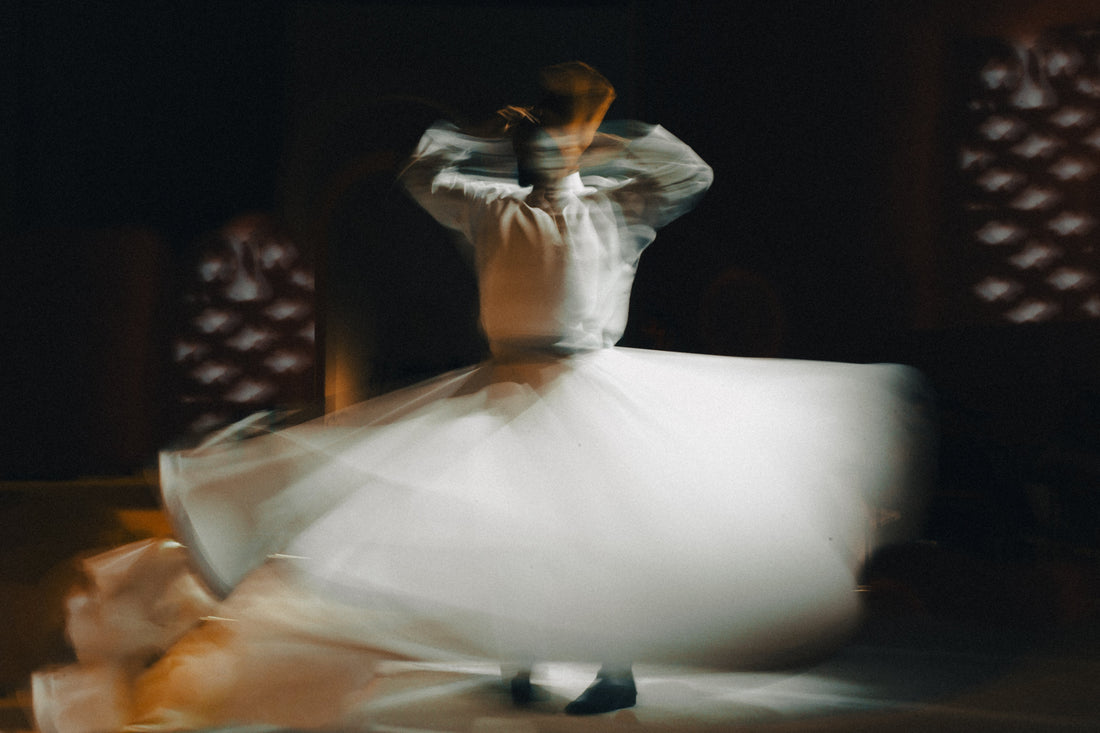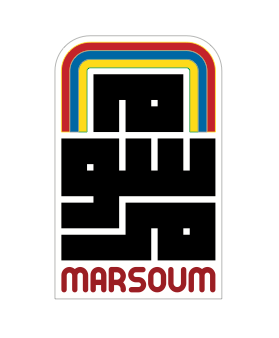
Light Weavers: Hiba Judeh's Meditation on Motion and the Divine
Share
Light Weavers: Hiba Judeh's Meditation on Motion and the Divine
There's a particular kind of honesty that emerges when an artist stops trying to capture reality and instead chases something that lies just beyond it. Hiba Judeh's Light Weavers series of photography art doesn't document Sufi whirling so much as it translates the experience into something visual and visceral.
These aren't photographs in the traditional sense. They're traces of movement, evidence of transcendence, and subtle invitations to consider what lies beneath the surface of our everyday consciousness.

The Discipline Behind the Dance
At the heart of Light Weavers is Sufi whirling, a movement discipline rooted in The Law of Detachment as taught by the 13th-century Sufi Grandmaster Ibn Arabi. The practice uses spiral repetition to recenter the body's physical and metaphysical energy centers.
Through this earthing of stagnant charges, practitioners seek an altered state of consciousness that separates them from mundane reality and connects them to something larger, something divine.
For Judeh, photographing this practice becomes "an act of hypnosis and a true reminder of that which is bigger and more important than our physical, mundane reality."
Hiba’s not interested in the clinical documentation of a cultural practice. Instead, she's pursuing what she calls "the connection to our Divine self that can only be achieved through ways of the heart."
Motion as Medium
What makes Light Weavers compelling is Judeh's technical choice to embrace blur and motion. In an age where photography increasingly tempts us to seek pixel-perfect sharpness, these images resist clarity.
The whirling figure of a Light Weaver appears ghostlike, layered across time, caught between presence and absence. The white garments bloom and billow like luminous clouds against dark backgrounds. You can almost feel the centrifugal force, the way the body becomes a conduit for something beyond itself.

This aesthetic choice reflects Judeh's broader artistic philosophy. She's someone who sees herself as an "Inner Engineer," always looking for the deeper meaning beneath the surface.
Her background in both photography and film, and her deep, ancestral knowledge of the Sufi grandmaster Ibn Arabi’s teaching have taught her that sometimes the most truthful representation isn't the sharpest one. Sometimes truth lives in the space between frames, in the suggestion rather than the statement.
A Career Built on Observation
Judeh's path to Light Weavers has been anything but linear. Born in Amman and now based in Dubai, she began her creative life as a writer, particularly drawn to poetry and metaphor. But as she puts it, she carried "far too many iridescent images" to convey them all through words alone. By 2000, she had rediscovered photography and made the conscious decision to create a visual platform through her mind.
Her formal training reflects this dual interest in the still and the moving image. After obtaining a degree in Visual Arts from Jordan University, she earned a Film Diploma from the SAE Institute and an MFA in Directing and Cinematography from USC Middle East – RSICA. She's worked as a still photographer on major productions including Netflix's Messiah, Sergio, and Caliphate, as well as Ridley Scott's Prometheus. These experiences have sharpened her eye for composition and narrative, skills that inform her personal work.
Her short films Duma and Someone, both psychological dramas, have been recognized at international festivals. Whether working in photography or cinema, Judeh approaches each project with the same question: what lies beneath what we see?
The Spiritual Made Visual
What distinguishes Light Weavers within Judeh's broader body of work is its explicit engagement with spiritual practice. While much of her photography and film explores psychological depth and inner landscapes, this series makes the metaphysical literal. The whirling dervish becomes a visual metaphor for transcendence, for the possibility of breaking free from our fixed perspectives.
There's something particularly resonant about this work in the context of contemporary Arab art. At a time when the region is often reduced to headlines and crisis, Judeh offers something different: a meditation on continuity, on practices that have endured for centuries, on the possibility of accessing deeper truths through disciplined movement and devotion.
This aligns with the broader vision of painting a different story of the Arab World, one that centers interiority, spirituality, and artistic innovation rather than the narratives typically imposed from outside.
Ways of the Heart
What Judeh ultimately offers in Light Weavers is a reminder that photography can do more than document. It can suggest, evoke, and transform. These images ask us to slow down, to look longer, to consider what it might mean to spin until the world dissolves and something else takes its place.
In a visual culture saturated with images designed for quick consumption and instant understanding, Light Weavers requires something different. It asks for contemplation. It suggests that some truths can't be captured sharply, that mystery and meaning often live in the blur, in the space between one moment and the next.
For Hiba Judeh, photographing the whirling dervish isn't about preserving a cultural practice for posterity. It's about translating a feeling, an experience, a possibility.
It's about showing us that transcendence, whatever that means to each viewer, might be closer than we think. We just have to be willing to look with softer eyes, to see beyond the surface, to trust in ways of the heart.
Collecting Consciousness
For emerging collectors, Light Weavers represents an opportunity to acquire work that operates on multiple levels. These photographs are beautiful as objects, certainly, with their dramatic contrasts and ethereal quality. But they're also conceptually rich, rooted in both artistic tradition and spiritual practice. They're conversation pieces in the best sense, works that invite sustained attention and interpretation.
There's also something appealing about Judeh's position in the contemporary art world. She's an established artist with significant credentials and exhibition history, but she's not yet a household name. For collectors interested in supporting Arab artists before their market values explode, this is exactly the kind of work to consider. It has depth, rigor, and a clear artistic vision.

Artist Statement
This project explores Sufi Whirling, which is a movement discipline that is based on The Law of Detachment, founded by Sufi Grandmaster Ibn Arabi.
This discipline uses the mechanics of spiral repetition which is believed to recenter the physical and metaphysical energy centres of the human body - by earthing the stagnant charges, one may experience an altered state of consciousness that separates whirler from reality.
To record such movement is an act of hypnosis and a true reminder of that which is bigger and more important than our physical, mundane reality, which is the connection to our Divine self that can only be achieved through ways of the heart.
Hiba Judeh
